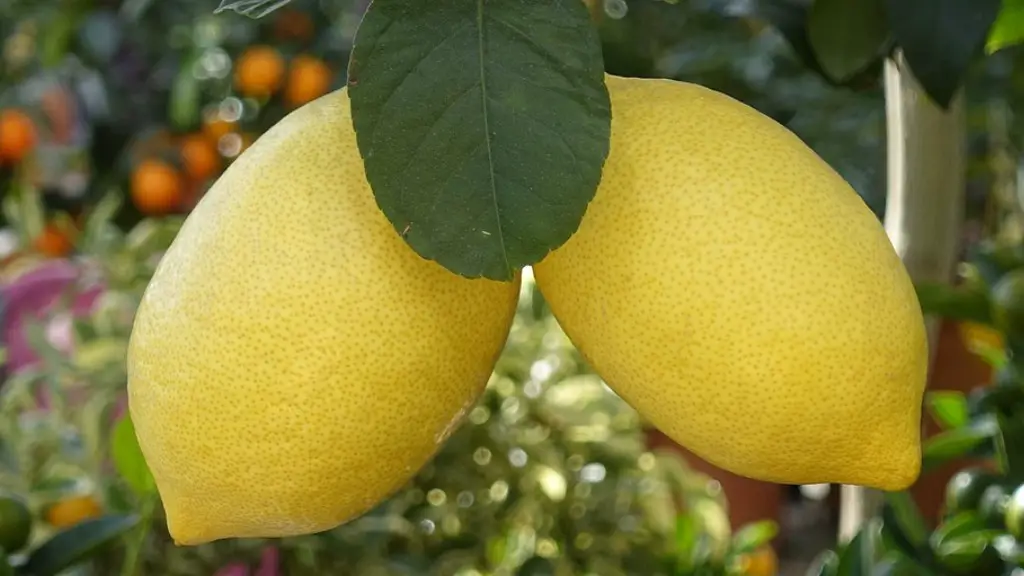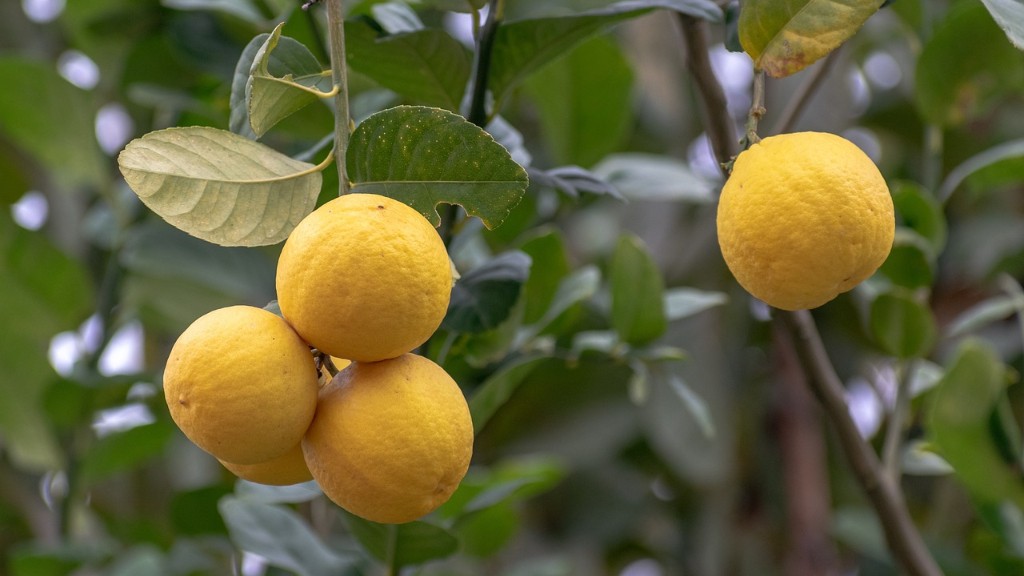Lemon trees are native to Asia and need a lot of sunlight and water to produce fruit. They are drought tolerant, but will produce more fruit if they are given enough water. Lemon trees need about 1 inch of water per week.
At least one to two inches of water per week is recommended for a lemon tree, though more may be needed in hot, dry climates. Mulching can help conserve moisture.
How often should a lemon tree be watered?
Lemon trees need a regular watering schedule to stay healthy and happy. Depending on rainfall in your area or humidity indoors, you should water your lemon tree once a week or every other week. To check if your lemon tree needs water, stick your finger into the top 2 inches of soil. If the soil is dry, it’s time to water your lemon tree.
If the soil of your lemon tree is dry to the touch 2-3 inches below the surface, it’s time to water.
How much water does a lemon tree need each day
Lemon trees need an inch or two of water applied once or twice weekly. Container-grown lemon trees typically require watering more frequently. They may need to be watered every day or two if grown outdoors during hot weather. Lemon tree watering is different for older trees in the ground.
When watering fruit trees, it is important to give them the appropriate amount of water based on their width. If the tree is only two feet wide, then it only needs two gallons of water each week. However, if the tree is five feet wide, it will need ten gallons of water each week. For trees that are ten feet wide, they will need fifty gallons of water each week.
Do lemon trees need full sun?
Lemon trees require full sunlight for adequate growth. While lemon trees can tolerate a range of soils, including poor soil, most prefer well-drained, slightly acidic soil. Lemon trees should be set slightly higher than ground.
It is important to neither under or over water citrus plants. Tap water is fine to use, but softened water should be avoided as it can contain sodium salts.
What does overwatered lemon tree look like?
If you notice that the leaves on your tree are yellow or cupped, this may be a sign that you are overwatering the tree. roots can become soggy and lead to problems with the tree’s health. Instead, water your tree less often, but provide a deeper soaking. This will help the tree to better absorb the water and promote healthier roots.
An underwatered lemon tree will have drooping leaves that are too heavy for the branches. The leaves will also be crispy and dry or curl upwards.
What is the best way to water lemon trees
If the soil is wet, wait two days before checking again. Squeezing a bit of soil between your fingers and if water seeps out, it’s still wet. The only time they don’t want a lot of water is in winter if they are being overwintered. You should then let the soil dry out slightly before watering again.
As a general rule, lemon trees prefer a warm subtropical climate, but will still grow in cooler climates if sheltered from cold winds and cold winter conditions. When the tree is cold, its roots are unable to absorb enough nutrients to keep the leaves green, and in turn go yellow.
Do Meyer lemon trees need a lot of water?
Meyer Lemons are a type of lemon tree that is becoming increasingly popular. They are named after Frank Meyer, who introduced them to the United States in 1908. Meyer Lemons are a hybrid between a lemon and either an orange or a mandarin.
Meyer Lemon Trees need water every one to two weeks. However, too much or too little water can be detrimental to the tree. Leaves can be an indicator as to how your tree feels. If the leaves are drooping like they’re too heavy for the branches, the tree is getting too much water. If the leaves are crispy and dry or curl upwards, this is a sign of under-watering.
Generally, it is best to err on the side of too little water rather than too much. When in doubt, check the leaves and soil before watering.
Lemon trees need certain nutrients to stay healthy and produce fruit. When lemon trees are deficient in these nutrients, it can cause their leaves to curl, droop, and turn yellow. Lemon trees are heavy feeders and need to be fertilized frequently so they can produce fruit.
How do I know if my citrus tree is overwatered
Overwatering trees can lead to a number of problems, including the wilting of new growth, the appearance of light green or yellow leaves, and the breaking of leaves. If you suspect that your tree is being overwatered, take a look at the area around the tree. If it is constantly wet, it is likely that the tree is getting too much water.
This is the easiest watering method for a tree. You simply need to drill three 3/16-inch holes in a 5-gallon bucket, fill the bucket with water, and place it near but not right up against the trunk. The bucket will provide a slow, deep soaking in the root zone, which is best for the tree.
What time of day should you water fruit trees?
The best time to water is in the morning or evening, so the roots have a chance to absorb most of the water. If you water during the day, much of the water will evaporate before it has a chance to reach the roots.
Lemon trees prefer a climate with temperature range being between 70-100 degrees. Once temperatures rise above 103 degrees, the lemon tree will stop growing, or photosynthesizing, causing it to go somewhat dormant. If the heat lasts for very long, it can cause the tree to drop fruit.
What are three common problems that lemon trees can have
If you notice any black, moldy spots on your lemon tree’s leaves, it is likely caused by sooty mold. This is a type of fungus that grows on the honeydew that is secreted by aphids. To get rid of sooty mold, you will need to get rid of the aphids. This can be done by spraying the leaves with water to knock the aphids off, or by using an insecticide.
If you notice any fuzzy gray mold or brown spots on your lemon tree’s leaves, it is likely caused by botrytis blight. This is a type of fungal disease that can affect many different types of plants. To treat botrytis blight, you will need to use a fungicide.
If you notice any tan spots with dark outlines on your lemon tree’s leaves, it is likely caused by anthracnose. This is another type of fungal disease that can affect many different types of plants. To treat anthracnose, you will need to use a fungicide.
If you notice any brown scabs on your lemon tree’s leaves or fruit, it is likely caused by lemon scab. This is a type of fungal disease that is specific to lemon
Lemon trees in containers are more vulnerable to the cold and drought. While a lemon tree in the ground can take mild frost and cold, a lemon tree in a container cannot. A lemon tree in a container has a hardiness zone that is one zone higher than the USDA recommended zone.
Conclusion
Lemon trees require a lot of water to thrive. They should be watered deeply and regularly, especially during the hot summer months. A mature lemon tree can need up to 25 gallons (95 liters) of water per week.
Based on the information provided, it appears that a lemon tree needs quite a bit of water to stay healthy and produce fruit. It is important to give the tree a deep watering at least once a week, and to make sure the soil is moist but not soggy. If the tree is in a pot, it may need to be watered more frequently.




